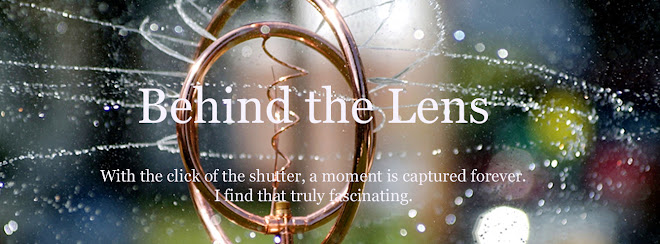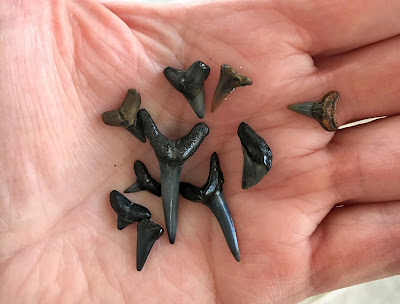Thursday, June 30, 2016
Monday, June 27, 2016
Loving Kami
Family deals with the stress and emotions of a child with bipolar disorder.
Kami Meyer, 8, withdraws and loses interest in her surroundings after breakfast at the family’s home in Eighty Four.
Kami, counts on her fingers while using math flash cards with a family friend at her home.
Kami , plays cards with her brother, Brennan, as her mother, Kris, and sister, Ashlyn, watch.
A Prehistoric Prize
Dave Bemiss of Michigan and his 2-year-old grandson, Nathan Bratton, pan for fossils in the shallow water at Caspersen Beach, Fla. Sharks typically lose at least one tooth per week.
It must be in my nature to be adventurous, since I have searched for new and exciting endeavors as far back as I can remember. When I was 6 years old, my father took me, my siblings and several neighborhood friends fossil-hunting.
We climbed up a hill behind my grandmother’s house and navigated through a deeply wooded area until we reached a clearing, where we came upon another large hill covered with rocks.
We all feverishly collected handfuls of rocks in a variety of shapes and sizes that carried the imprints of leaves and ferns. I felt as if I had discovered some long-lost secret of nature, which I would be able to display and talk about at my next first-grade show-and-tell.
Recently, I visited Venice Beach in Florida, known as the “shark-tooth capital of the world.” To illustrate how serious the residents are about the moniker, the town celebrates a shark-tooth festival in early April every year. Fossil collectors from throughout the southeastern United States converge on the South Florida beach to sell and display their wares.
It takes about 10,000 years for a shark tooth to fossilize. The most commonly found shark-teeth fossils are from 65,000 years ago.
Venice is composed of four beaches: Venice Municipal Beach, South Broward Beach, Caspersen Beach and Nokomis Beach. The entire area has an abundant amount of fossilized shark teeth, resulting from the state once being completely under water.
When the water receded, the prehistoric sharks died, their bodies decomposed and their teeth fossilized. Over time, storms, currents and waves pushed the fossils into shallow water, where beachcombers came upon them.
During my visit in May, I enjoyed a typical Florida morning at Caspersen Beach, where the sea and sky blended together to form a bright canvas on the horizon. Pelicans glided overhead in search of food, while visitors and locals sat under colorful umbrellas in colors resembling French Impressionist Henri Matisse’s still-life paintings.
Nathan Bratton gets ready to pour sand into a screen held by his grandfather, Dave Bemiss of Michigan, as they pan for fossils last month at Caspersen Beach, Fla.
All of this set the stage for amateur paleontologists, myself included, to stroll the shoreline hoping to discover a fossil that would be the envy of the many who came before us. Many venture into the water with what is known as a “Florida snow shovel.” The shovel has a basket on the end that is used to scoop through sand and shells to more easily find shark teeth. This was my preference, although others used buckets to scoop sand, which was then transferred into a primitive screened wooden frame. The truly adventurous souls used a snorkel or scuba dived for their treasures. If you’re lucky enough to find a tooth, it can be one of three colors: black, brown or gray.
After I found several teeth, I strolled the beach again, taking in the scenic surroundings, when suddenly I heard a young child’s voice.
Sharks shed thousands of teeth in their lifetime. Fossilized shark teeth are not white because they are usually covered with sediment, which prevents oxygen and bacteria from destroying them.
The youngster, 2-year-old Nathan Bratton, was excited, telling his grandfather, Dave Bemiss of Michigan, “Pap-pap, I got one.” Bemiss praised his grandson, saying “good job.” Finding fossils has become a passion for Bemiss, and he said he is happy he can share it with his grandson.
Who would have imagined that what nature produced millions of years ago would be something that would be used to form a bond between two very different generations?
As the day ended with another breathtaking sunset over the Gulf of Mexico, tourists and beach lovers made their way back to their cars, hotels and beach houses. Many carried in pails or in their pockets treasures that will undoubtedly last a lifetime. It isn’t necessarily the shark teeth themselves that will be passed on, but the stories of how and where they were found on that special day, when the sun seemed brighter than ever and the shark teeth surfaced once again.
Fossilized shark teeth can be valuable, and are often bought, sold and traded by enthusiasts and collectors. The most valuable are teeth of the megalodon shark, which can be as long as seven inches.
It must be in my nature to be adventurous, since I have searched for new and exciting endeavors as far back as I can remember. When I was 6 years old, my father took me, my siblings and several neighborhood friends fossil-hunting.
We climbed up a hill behind my grandmother’s house and navigated through a deeply wooded area until we reached a clearing, where we came upon another large hill covered with rocks.
We all feverishly collected handfuls of rocks in a variety of shapes and sizes that carried the imprints of leaves and ferns. I felt as if I had discovered some long-lost secret of nature, which I would be able to display and talk about at my next first-grade show-and-tell.
Recently, I visited Venice Beach in Florida, known as the “shark-tooth capital of the world.” To illustrate how serious the residents are about the moniker, the town celebrates a shark-tooth festival in early April every year. Fossil collectors from throughout the southeastern United States converge on the South Florida beach to sell and display their wares.
It takes about 10,000 years for a shark tooth to fossilize. The most commonly found shark-teeth fossils are from 65,000 years ago.
Venice is composed of four beaches: Venice Municipal Beach, South Broward Beach, Caspersen Beach and Nokomis Beach. The entire area has an abundant amount of fossilized shark teeth, resulting from the state once being completely under water.
When the water receded, the prehistoric sharks died, their bodies decomposed and their teeth fossilized. Over time, storms, currents and waves pushed the fossils into shallow water, where beachcombers came upon them.
During my visit in May, I enjoyed a typical Florida morning at Caspersen Beach, where the sea and sky blended together to form a bright canvas on the horizon. Pelicans glided overhead in search of food, while visitors and locals sat under colorful umbrellas in colors resembling French Impressionist Henri Matisse’s still-life paintings.
Nathan Bratton gets ready to pour sand into a screen held by his grandfather, Dave Bemiss of Michigan, as they pan for fossils last month at Caspersen Beach, Fla.
All of this set the stage for amateur paleontologists, myself included, to stroll the shoreline hoping to discover a fossil that would be the envy of the many who came before us. Many venture into the water with what is known as a “Florida snow shovel.” The shovel has a basket on the end that is used to scoop through sand and shells to more easily find shark teeth. This was my preference, although others used buckets to scoop sand, which was then transferred into a primitive screened wooden frame. The truly adventurous souls used a snorkel or scuba dived for their treasures. If you’re lucky enough to find a tooth, it can be one of three colors: black, brown or gray.
After I found several teeth, I strolled the beach again, taking in the scenic surroundings, when suddenly I heard a young child’s voice.
Sharks shed thousands of teeth in their lifetime. Fossilized shark teeth are not white because they are usually covered with sediment, which prevents oxygen and bacteria from destroying them.
The youngster, 2-year-old Nathan Bratton, was excited, telling his grandfather, Dave Bemiss of Michigan, “Pap-pap, I got one.” Bemiss praised his grandson, saying “good job.” Finding fossils has become a passion for Bemiss, and he said he is happy he can share it with his grandson.
Who would have imagined that what nature produced millions of years ago would be something that would be used to form a bond between two very different generations?
As the day ended with another breathtaking sunset over the Gulf of Mexico, tourists and beach lovers made their way back to their cars, hotels and beach houses. Many carried in pails or in their pockets treasures that will undoubtedly last a lifetime. It isn’t necessarily the shark teeth themselves that will be passed on, but the stories of how and where they were found on that special day, when the sun seemed brighter than ever and the shark teeth surfaced once again.
Fossilized shark teeth can be valuable, and are often bought, sold and traded by enthusiasts and collectors. The most valuable are teeth of the megalodon shark, which can be as long as seven inches.
Labels:
Caspersen Beach,
Fla.,
fossilize,
shark teeth,
shark-tooth capital,
Venice Beach.
Monday, June 13, 2016
Swinging Into Action
Pittsburgh Steeler Antonio Brown during the home run derby. At his Celebrity Softball Game at Consol Energy Park.
Pittsburgh Steeler Chris Boswell signs a few footballs for Chris Oravec, center, of Pittsburgh and his son Isaac 6, right, at Antonio Brown Celebrity Softball Game at Consol Energy Park.
Steelers tight end Weslye Saunders hits during the home run derby after the Antonio Brown Celebrity Softball Game Saturday at Consol Energy Park
Pittsburgh Steeler Chris Boswell signs a few footballs for Chris Oravec, center, of Pittsburgh and his son Isaac 6, right, at Antonio Brown Celebrity Softball Game at Consol Energy Park.
Steelers tight end Weslye Saunders hits during the home run derby after the Antonio Brown Celebrity Softball Game Saturday at Consol Energy Park
Subscribe to:
Posts (Atom)












